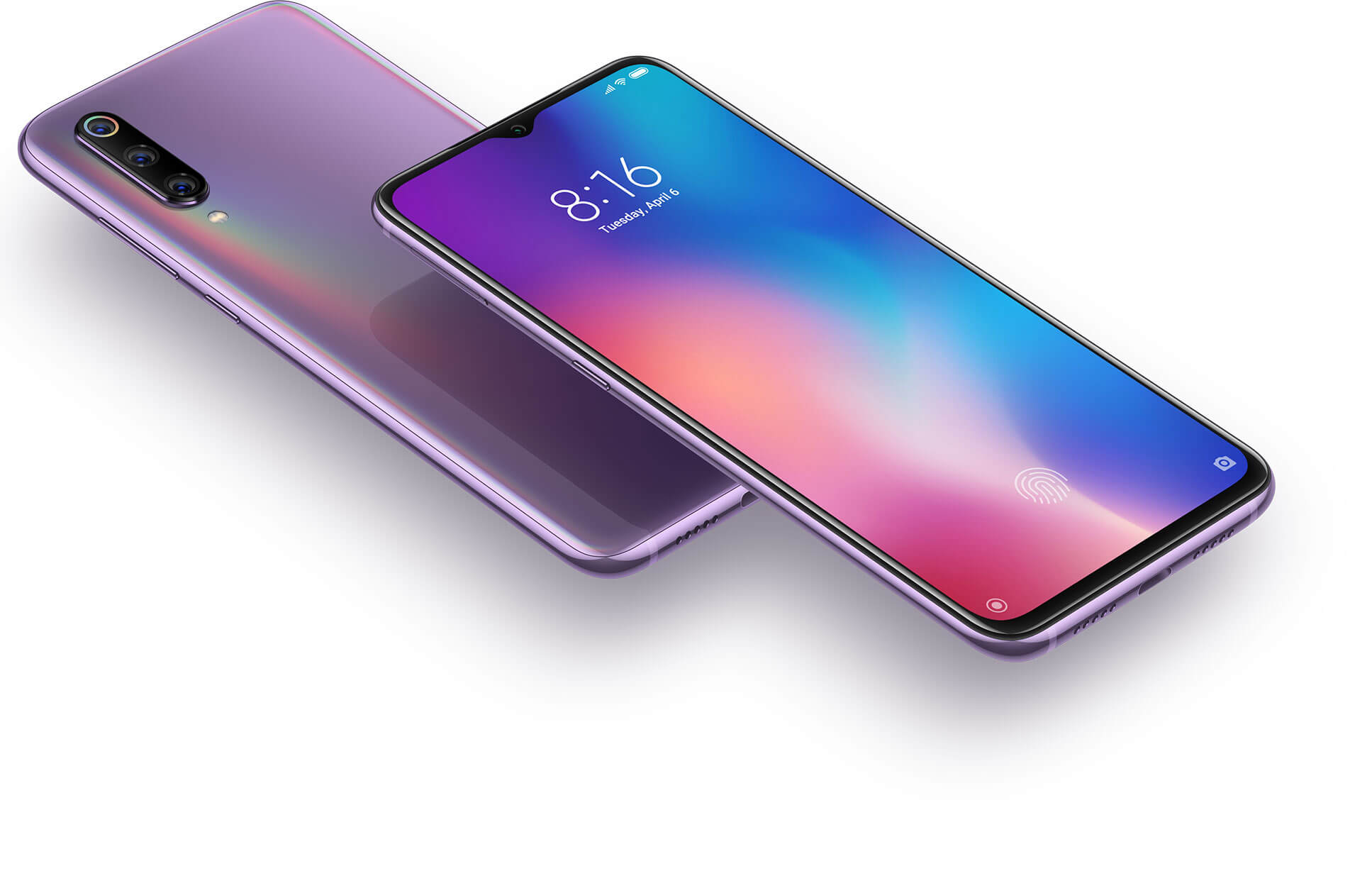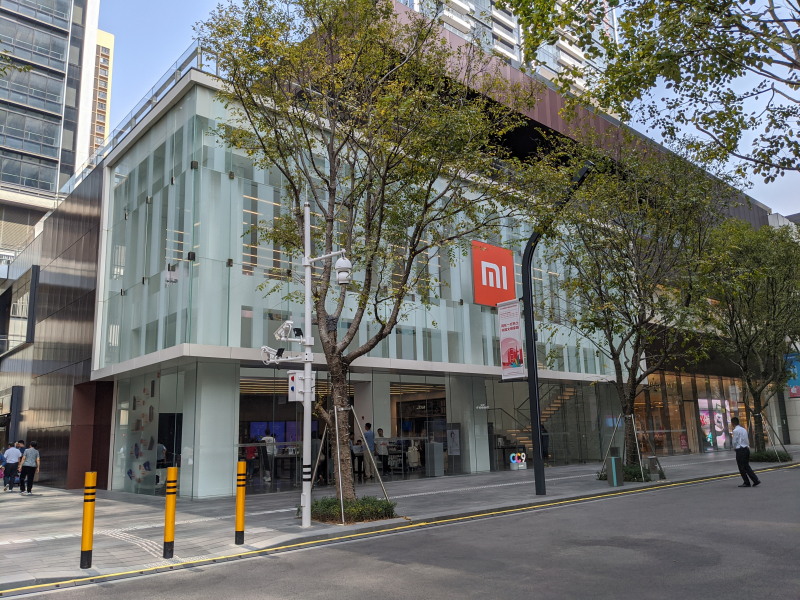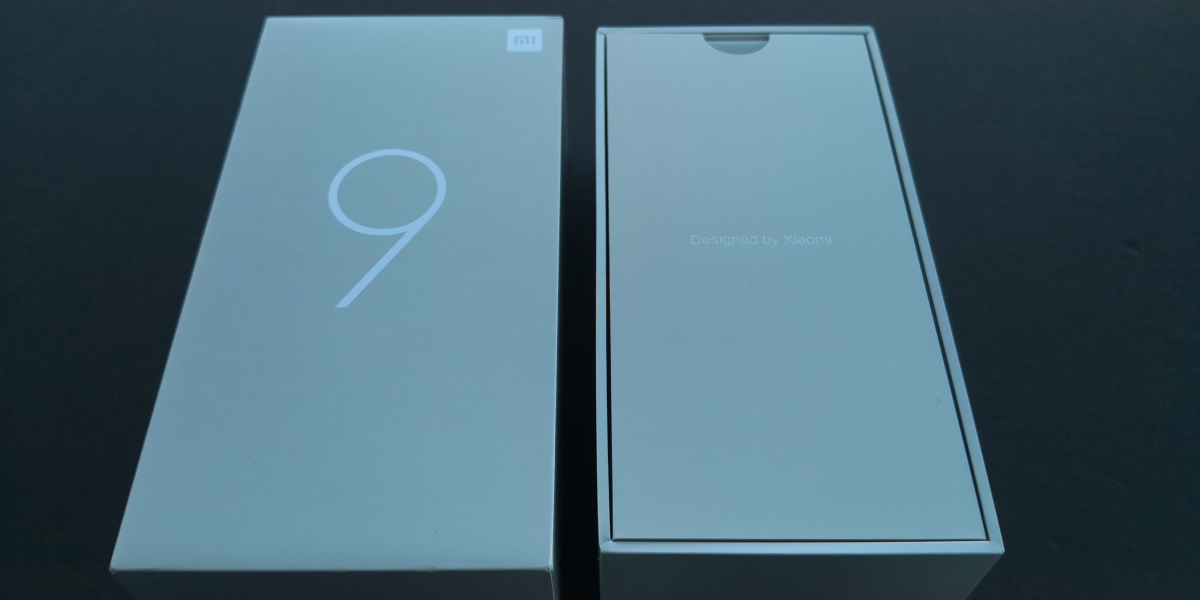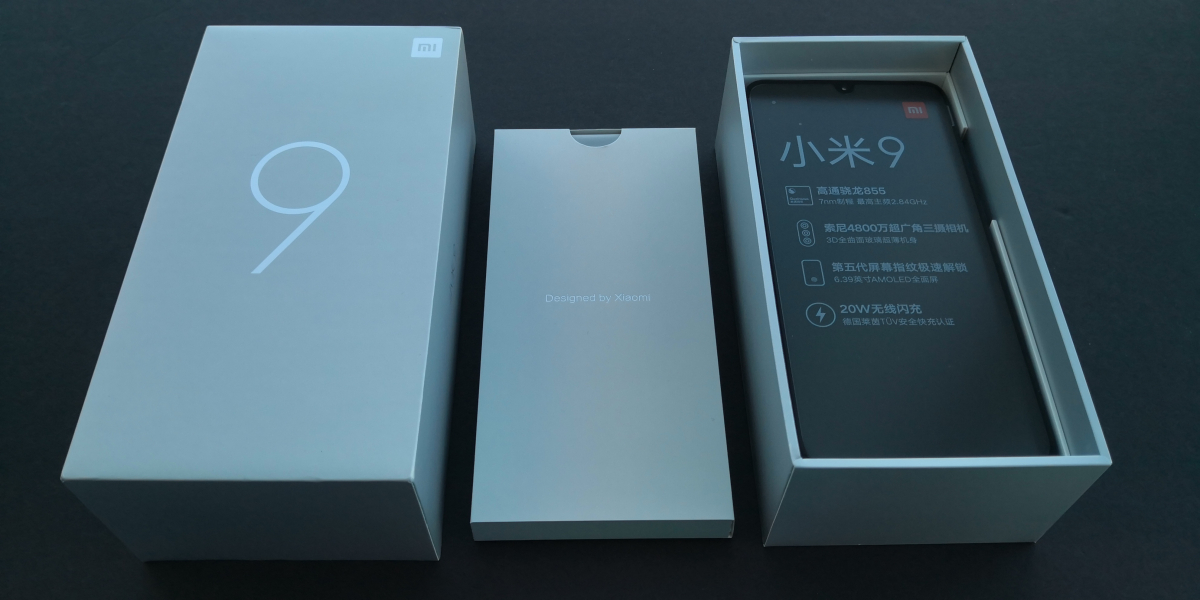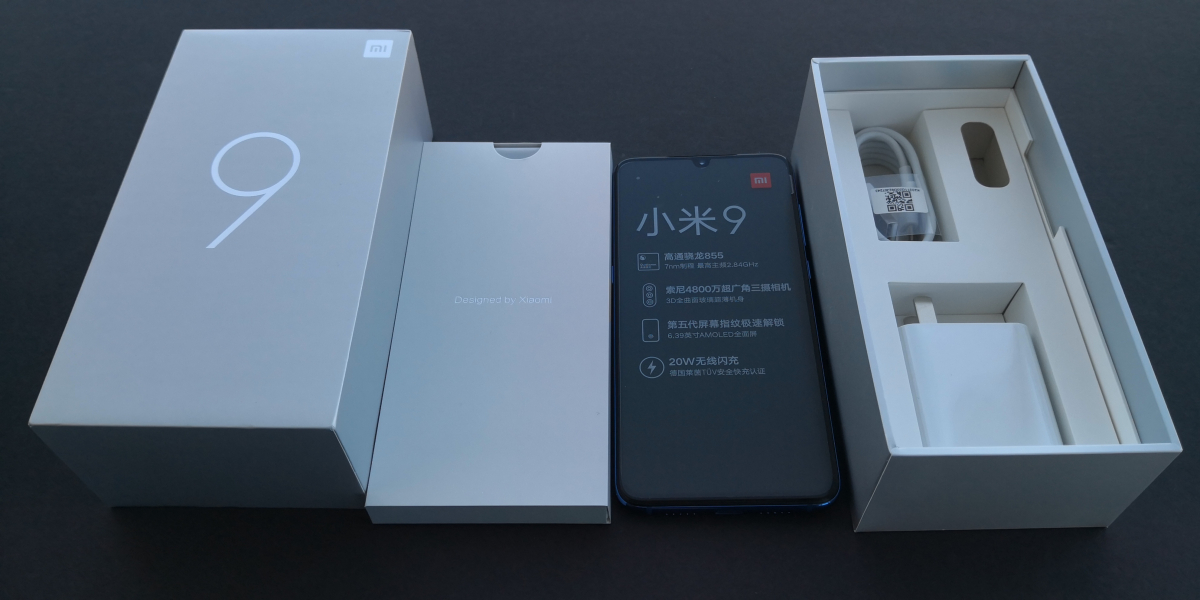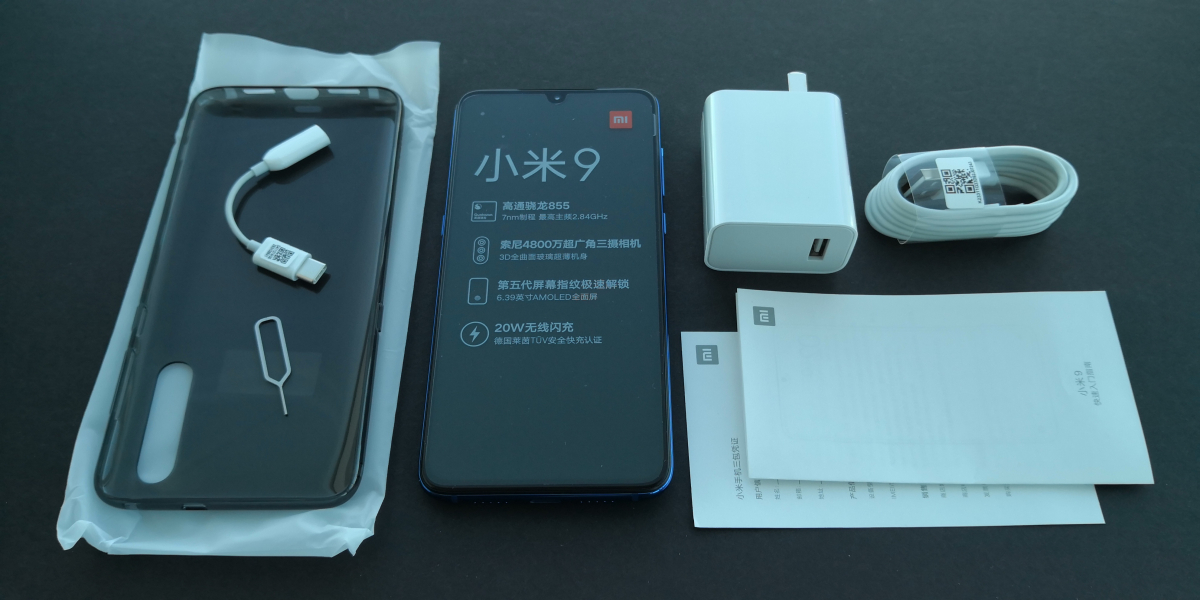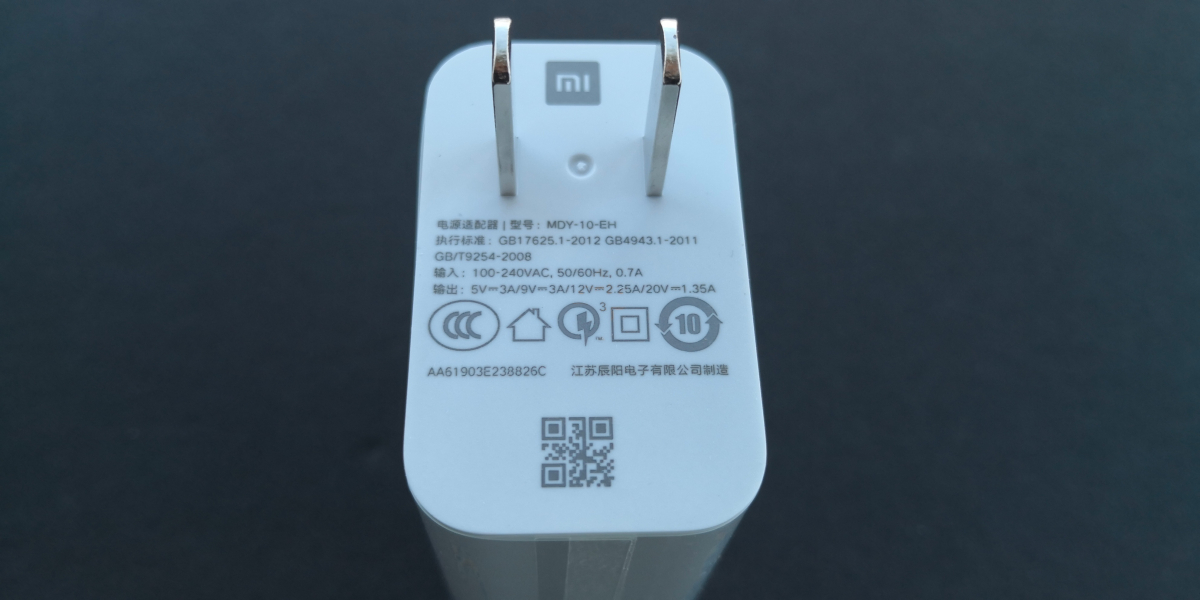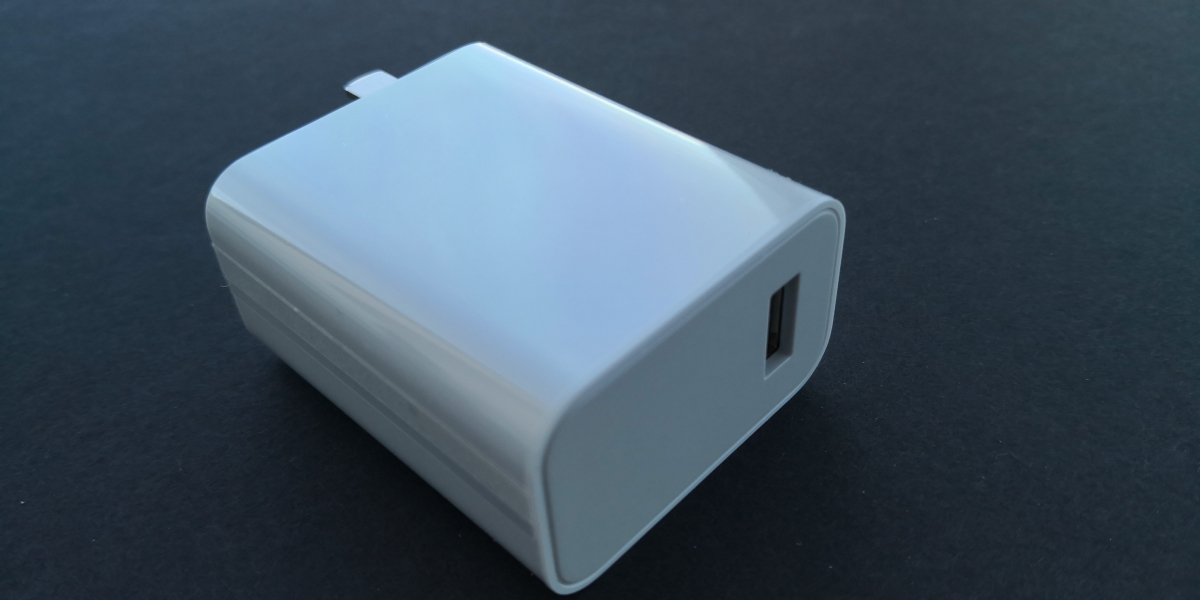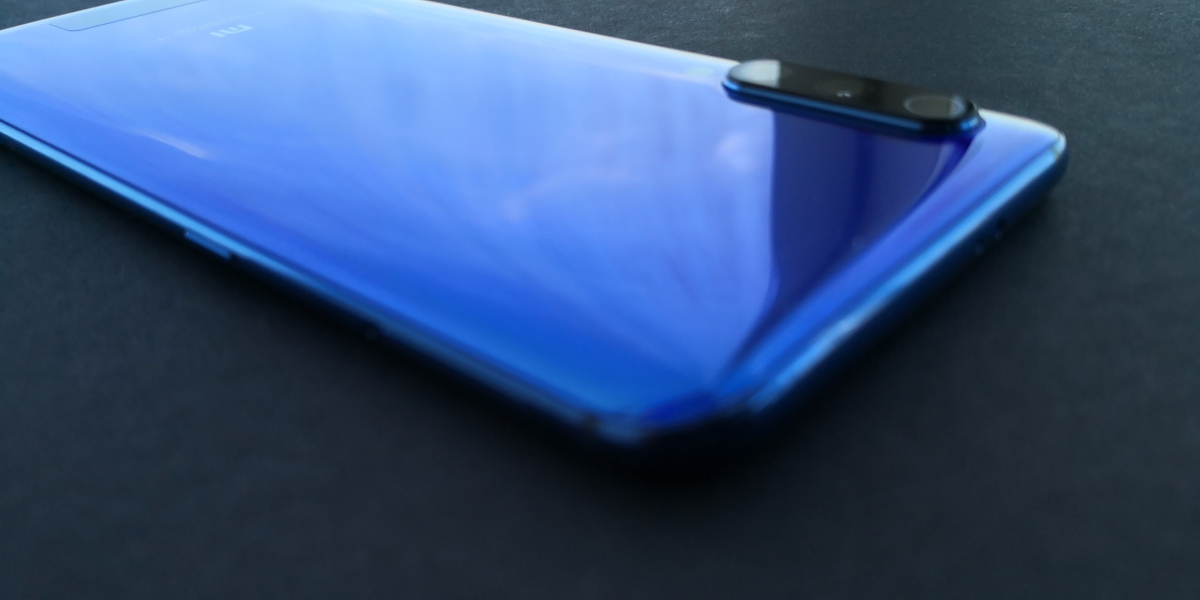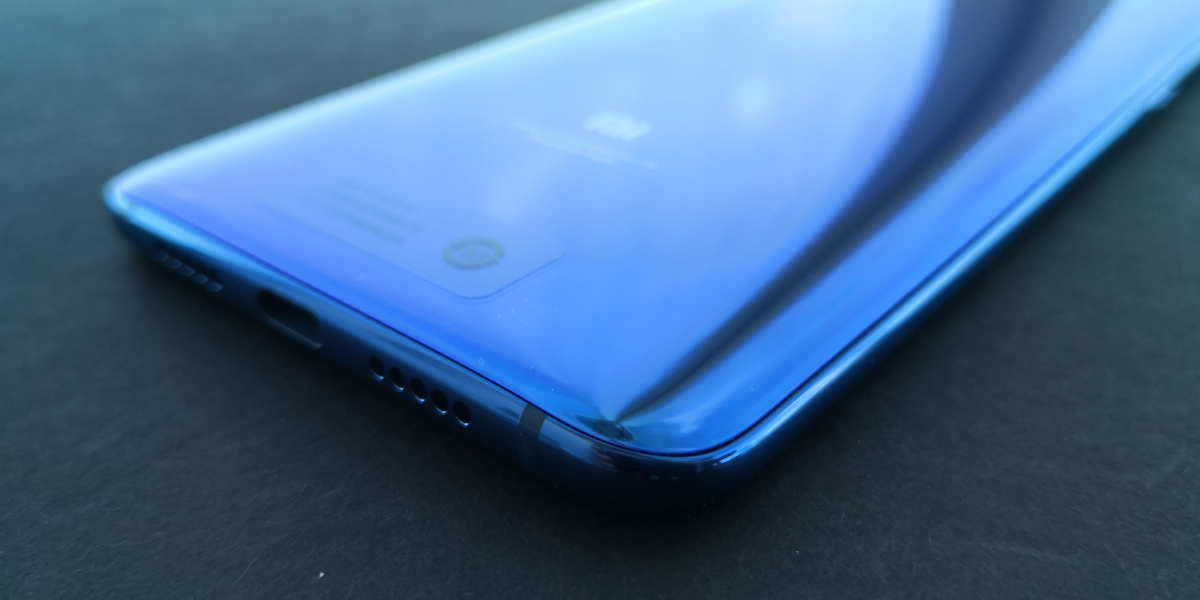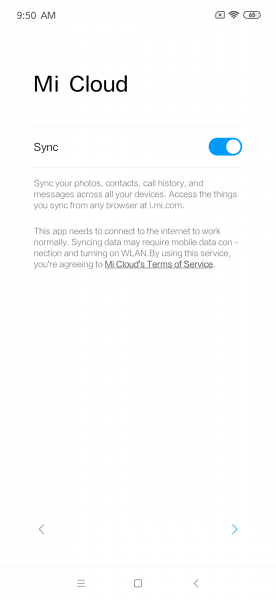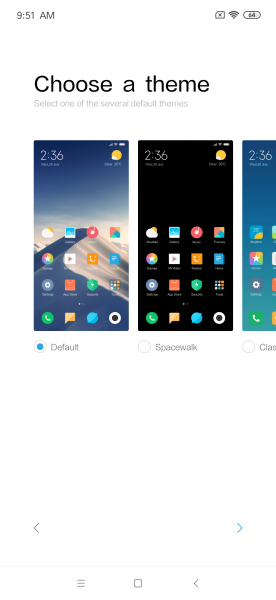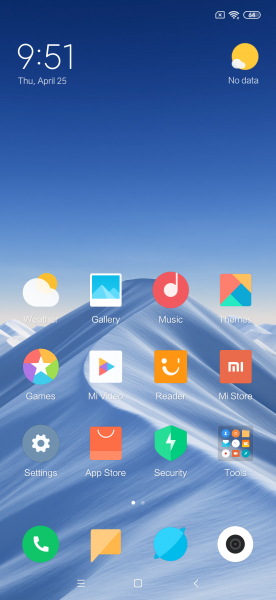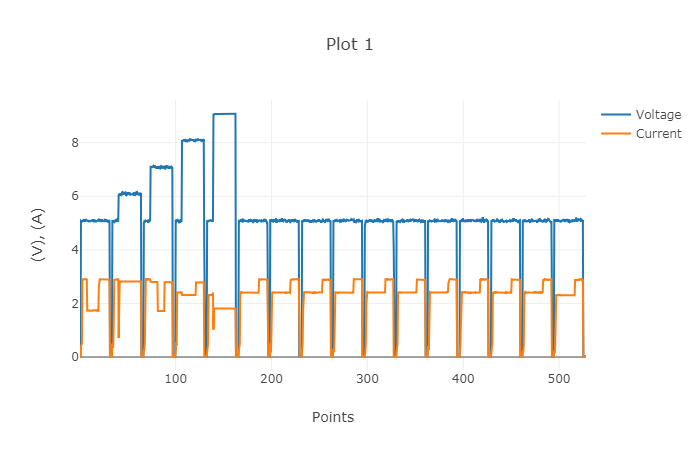More recent flagship phones like the Huawei Mate20 Pro and the Samsung Galaxy S10 5G have been pushing for faster charging and the same goes for the Xiaomi Mi 9. The Mi 9 still supports Qualcomm Quick Charge 4+ (QC4+) technology like the Xiaomi Mi 8 but is now shipped with a 27W based charger instead of the Xiaomi 18W QC 3.0 Charger that came with the Mi 8. Meanwhile for wireless charging the Mi 9 now supports up to 20W which is higher than the 15W wireless charging by the Huawei Mate20 Pro and much faster than the standard 10W on most Qi enabled phones.
With Qualcomm Quick Charge 4+, the Mi 9 can charge its battery quickly using USB Power Delivery 3.0, PPS (Programmable Power Supply), and Qualcomm Quick Charge 3.0 technology over USB Type-C. Compared to the Mi 8, the Mi 9 has a newer and faster Qualcomm Snapdragon 855 chipset and Adreno 640 GPU.
Let's now have a closer look at the Mi 9 after we purchased the phone.
Except for the Xiaomi 27W QC3 charger, the Mi 9 comes with similar accessories as the Mi 8 which consists of a USB Type-A to Type-C cable, SIM eject tool, clear soft case, documentation and a USB Type-C to 3.5 mm audio adapter for connecting to your traditional audio headphones from the phone's USB Type-C port.
The Mi 9 still uses a USB Type-A based Qualcomm Quick Charge 3.0 enabled charger despite the phone supporting Qualcomm Quick Charge 4+. The Xiaomi 27W QC3 charger supports power profiles of 15 watts (5 volts @ 3 amps), 27 watts (9 volts @ 3 amps), 27 watts (12 volts @ 2.25 amps) and 27 watts (20 volts @ 1.35 amps) for charging out.
Instead of only two rear cameras on the Mi 8, the Mi 9 has three cameras on its back with 48 MP (wide), 16 MP (ultrawide) and 12 MP (telephoto) and HDR, AI, and 4K video capture capabilities.
Xiaomi has chosen to follow Samsung's and Huawei's directions for the Mi 9 by having the fingerprint sensor under the display rather than on the back of the phone.
Starting up the Mi 9, the Welcome screen comes on and in the next few screens you need to select the language of your choice, connect to Wi-Fi, accept terms and conditions and insert a available SIM card. You can also choose to turn on data syncing on the Mi Cloud based network.


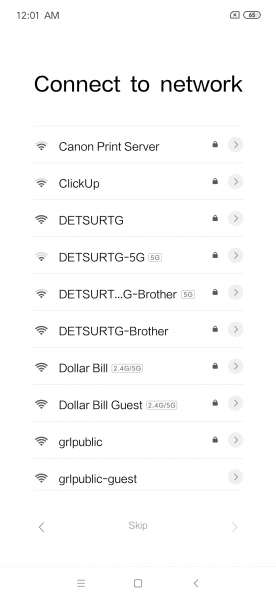
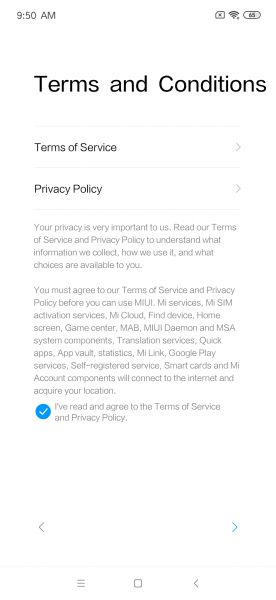
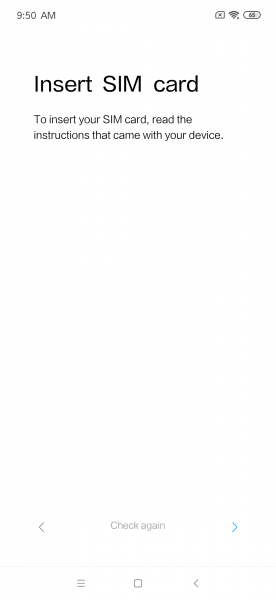
If you have an existing Mi account, you can choose to log in or simply create a new Mi account or skip it. The next screen will ask to add your fingerprint and set up voice command. It also allows you for additional settings such as location and auto updates.
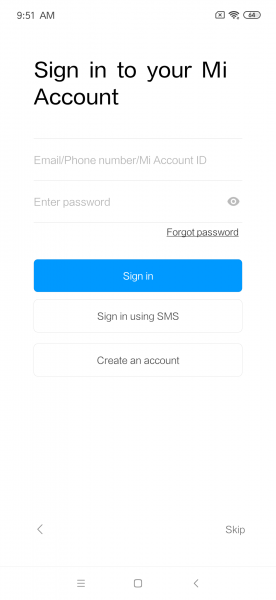
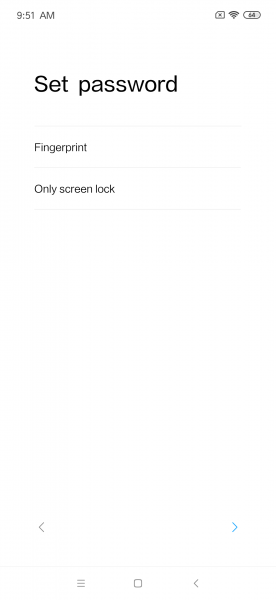
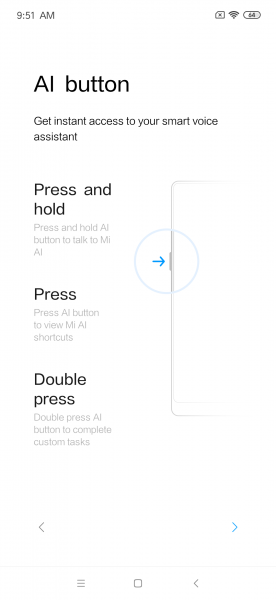
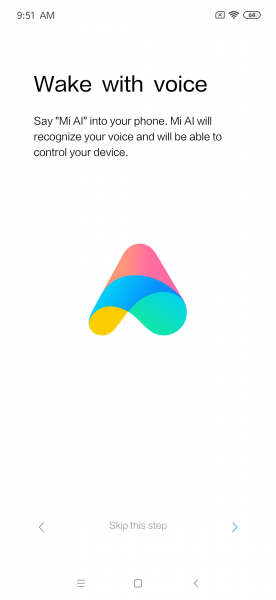
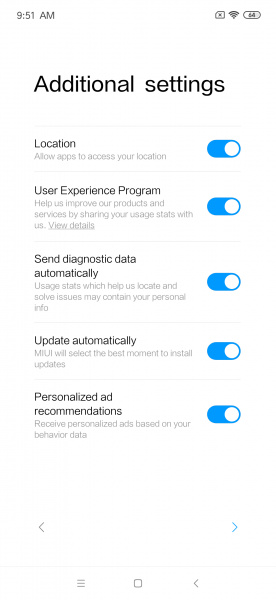
You can then select the theme of your choice before finally going to the Home screen so you can start using the phone.
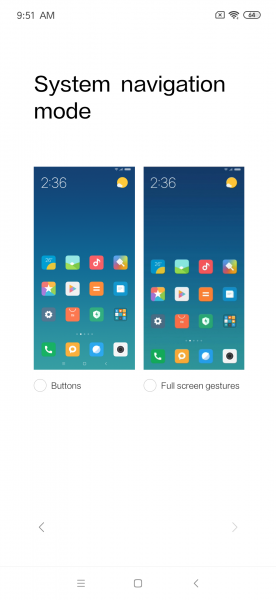

In the following test reports, we can see how the Mi 9 supports power which we tested using the USB Power Test App from Granite River Labs with the Granite River Labs USB Power Delivery Compliance C2 Tester.
The USB Power Test App first negotiates a power contract emulating the Source to determine the Power Delivery Sink capabilities of the Mi 9. The USB Power Test App then reports out the voltage and current supported by the phone for each of the Source PDO's advertised to the phone.
| Sink Cap. | Voltage (V) | Current (A) |
|---|---|---|
| 5V | 5.11 | 2.9 |
| 6V | 6.06 | 2.82 |
| 7V | 7.02 | 2.79 |
| 8V | 8.07 | 2.78 |
| 9V | 9.07 | 1.81 |
| 10V | 5.12 | 2.89 |
| 11V | 5.08 | 2.9 |
| 12V | 5.13 | 2.9 |
| 13V | 5.07 | 2.9 |
| 14V | 5.1 | 2.89 |
| 15V | 5.14 | 2.9 |
| 16V | 5.13 | 2.89 |
| 17V | 5.09 | 2.9 |
| 18V | 5.06 | 2.9 |
| 19V | 5.1 | 2.89 |
| 20V | 5.13 | 2.89 |
The USB Power Test App from Granite River Labs also produces a voltage, current trace plot which graphically shows the voltage and current requested by the phone for each advertised Source PDO throughout the power negotiation.
Using the USB Power Delivery Compliance C2 Tester from Granite River Labs to run just a subset of the full USB Power Delivery compliance test suite, we can see that the Mi 9 supports charging using 15 watts (5 volts @ 3 amps), 27 watts (9 volts @ 3 amps) and 27 watts (12 volts @ 2.25 amps) fixed PDO's. Unfortunately many compliance failures were also observed so just be careful when using this phone.
Power Capabilities
Parameter
|
GetCapabilities
|
|---|---|
PD_POWER_AS_SINK
|
27000
|
NUM_SNK_PDOS
|
3
|
Supply Type #1
|
Fixed
|
Voltage #1
|
0x64(5V)
|
OP Current #1
|
0x12C(3A)
|
Supply Type #2
|
Fixed
|
Voltage #2
|
0xB4(9V)
|
OP Current #2
|
0x12C(3A)
|
Supply Type #3
|
Fixed
|
Voltage #3
|
0xF0(12V)
|
OP Current #3
|
0xE1(2.25A)
|
USB-IF High Level Mapping Summary
Sl No
|
Test Category
|
Test Group Description
|
Test Result
|
|---|---|---|---|
1
|
PHY_PRIMARY_TX
|
BMC Physical Layer Transmitter
|
PASS
|
2
|
PHY_PRIMARY_RX
|
BMC Physical Layer Receiver
|
FAIL
|
3
|
PHY_PRIMARY_MISC
|
BMC Physical Layer Miscellaneous
|
FAIL
|
4
|
PROT_PRIMARY
|
Protocol Specific Primary
|
FAIL
|
5
|
POWER_PRIMARY
|
Power Source/Sink Primary
|
FAIL
|
Result Summary
Sl No
|
Test ID
|
Test Name
|
Test Result
|
|---|---|---|---|
1
|
TDA.2.1.1.1
|
TDA.2.1.1.1 BMC PHY TX EYE
|
PASS
|
2
|
TDA.2.1.1.2
|
TDA.2.1.1.2 BMC PHY TX BIT
|
PASS
|
3
|
TDA.2.1.2.2
|
TDA.2.1.2.2 BMC PHY RX INT REJ
|
FAIL
|
4
|
TDA.2.1.2.1
|
TDA.2.1.2.1 BMC PHY RX BUSIDL
|
FAIL
|
5
|
TDA.2.1.3.1
|
TDA.2.1.3.1 BMC PHY TERM
|
FAIL
|
6
|
TDA.2.1.3.2
|
TDA.2.1.3.2 BMC PHY MSG
|
FAIL
|
7
|
TDA.2.2.1
|
TDA.2.2.1 BMC PROT SEQ GETCAPS
|
FAIL
|
8
|
TDA.2.2.2.1
|
TDA.2.2.2.1 BMC PROT SEQ CHKCAP P PC
|
FAIL
|
9
|
TDA.2.2.2.2
|
TDA.2.2.2.2 BMC PROT SEQ CHKCAP NOMARK P PC
|
FAIL
|
10
|
TDA.2.2.2.3
|
TDA.2.2.2.3 BMC PROT SEQ CHKCAP CP ACC
|
FAIL
|
11
|
TDA.2.2.2.4
|
TDA.2.2.2.4 BMC PROT SEQ CHKCAP NOMRK CP ACC
|
PASS
|
16
|
TDA.2.2.7
|
TDA.2.2.7 BMC PROT BIST NOT 5V SRC
|
FAIL
|
18
|
TDA.2.2.9
|
TDA.2.2.9 BMC PROT GSC REC
|
FAIL
|
19
|
TDA.2.2.10
|
TDA.2.2.10 BMC PROT IGN PPS
|
PASS
|
21
|
TDA.2.3.1.2
|
TDA.2.3.1.2 POW SRC LOAD CP ACC
|
FAIL
|
22
|
TDA.2.3.2.1
|
TDA.2.3.2.1 POW SRC TRANS P PC
|
FAIL
|
24
|
TDA.2.3.3.1
|
TDA.2.3.3.1 POW SNK TRANS C CP
|
FAIL
|
25
|
TDA.2.3.3.2
|
TDA.2.3.3.2 POW SNK TRANS PC
|
FAIL
|
BMC Eye Diagram
 GTrusted
GTrusted

